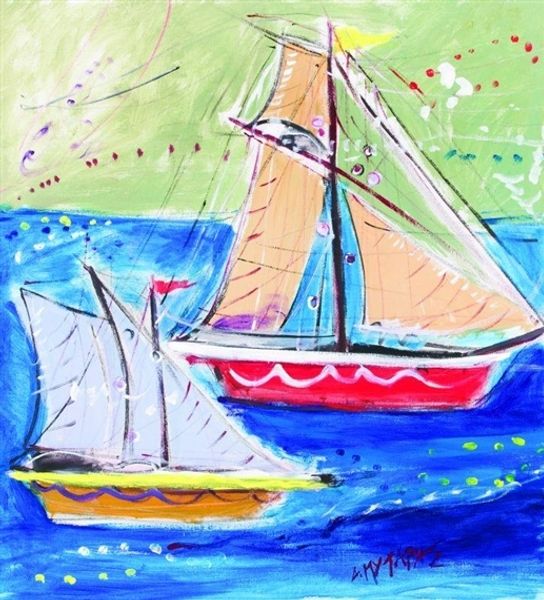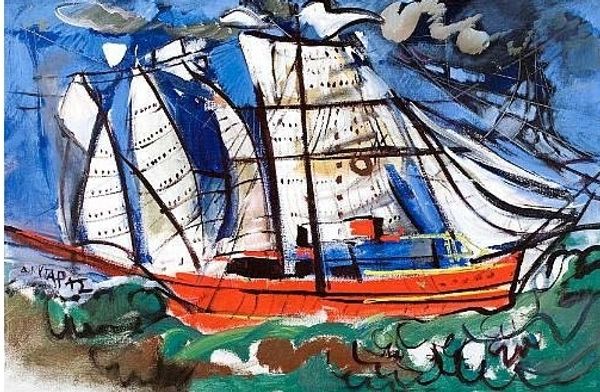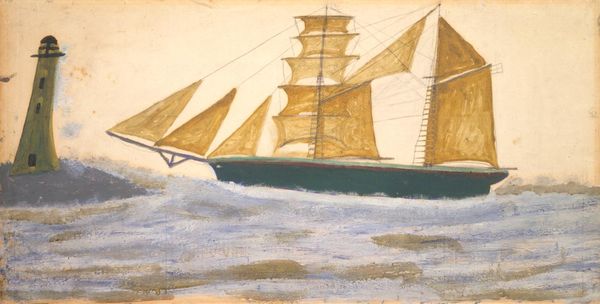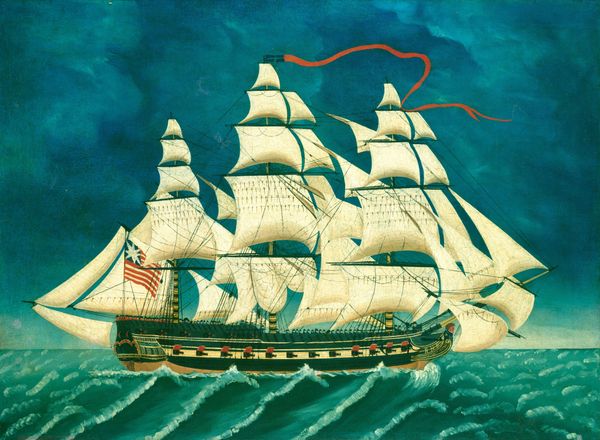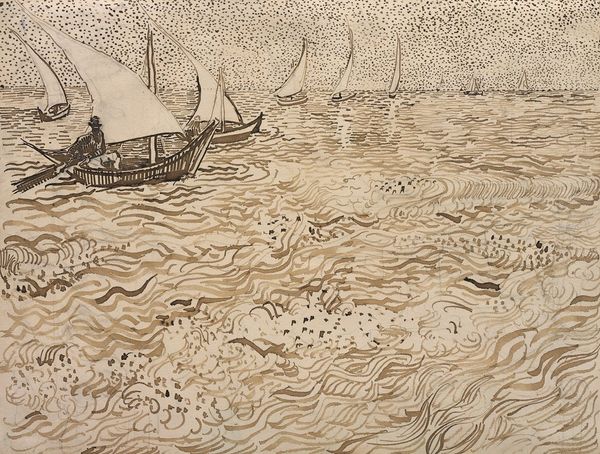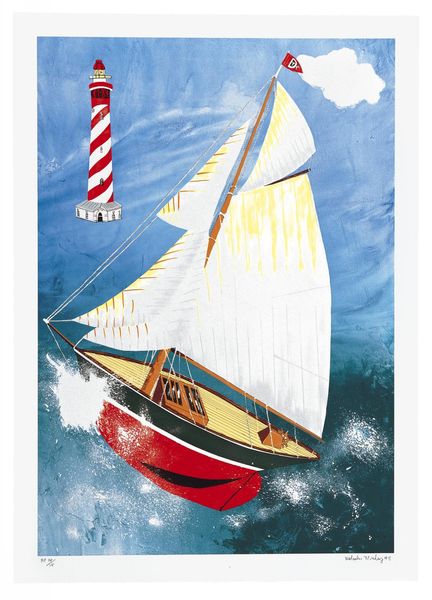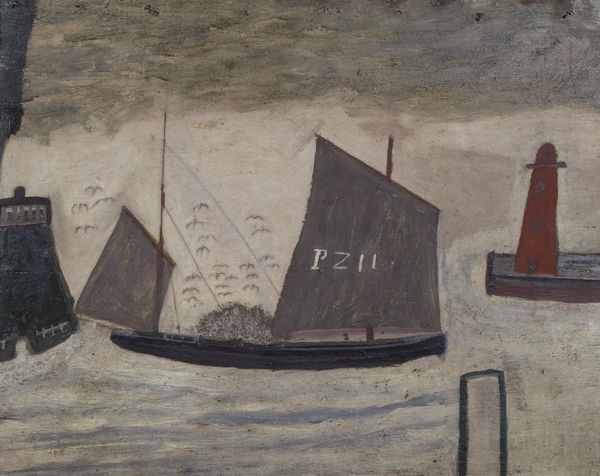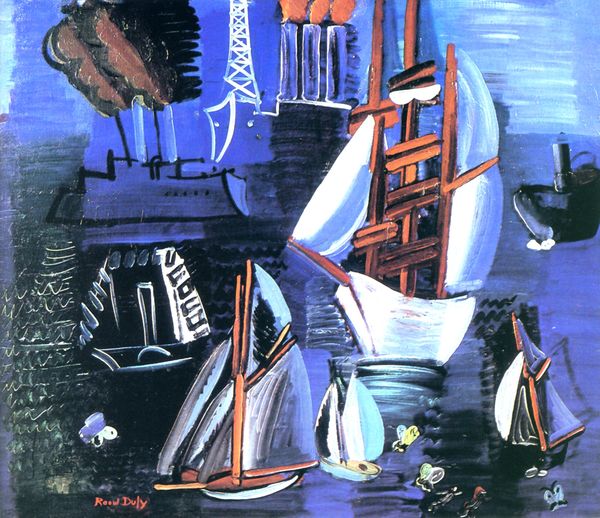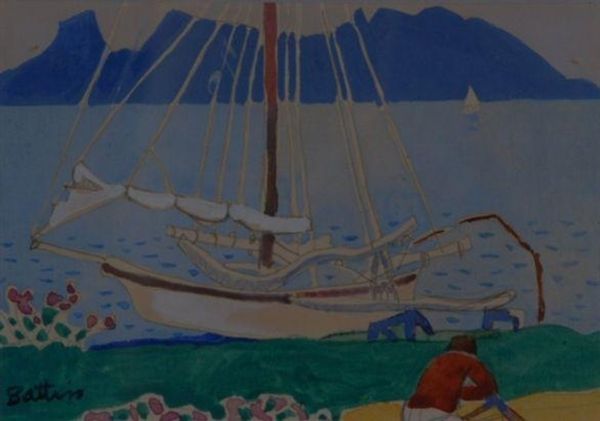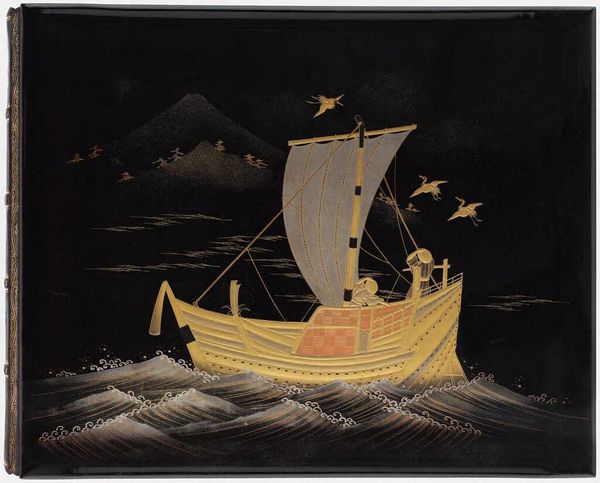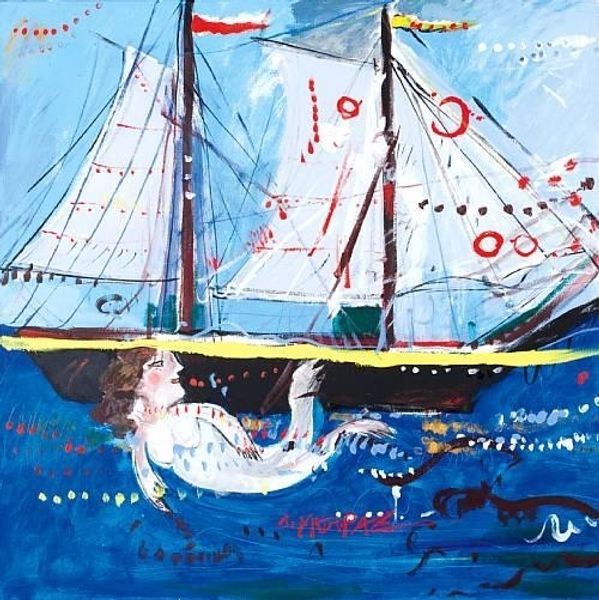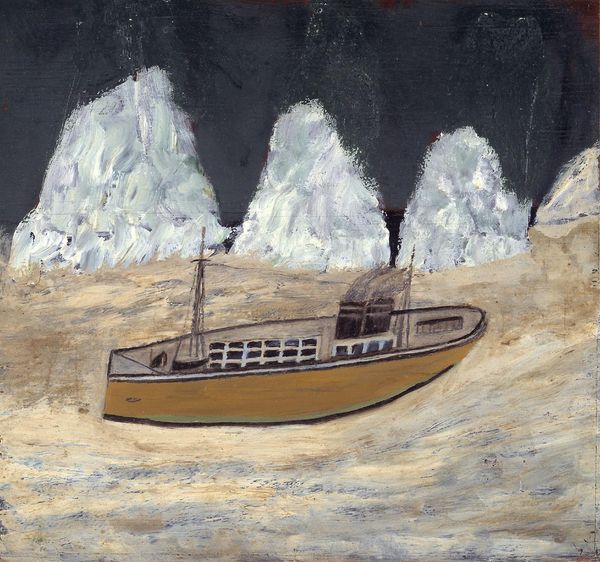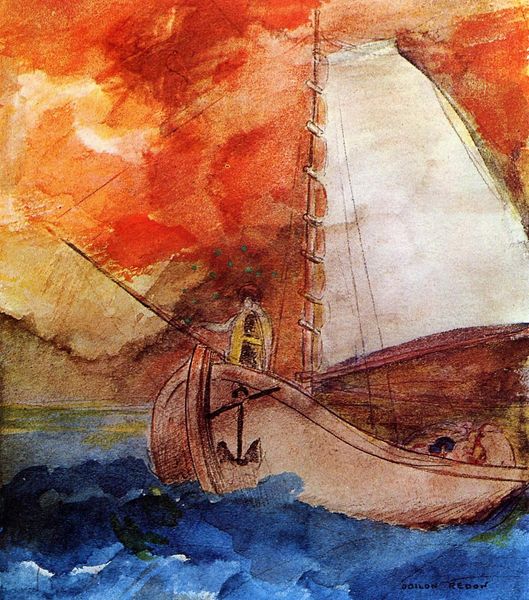
Dimensions: support: 438 x 559 mm frame: 528 x 646 x 46 mm
Copyright: CC-BY-NC-ND 4.0 DEED, Photo: Tate
Curator: Alfred Wallis’s “The Blue Ship” at the Tate collection presents a fascinating example of naive art from a Cornish mariner turned painter. Editor: It strikes me as a memory painting, all bold colors and flattened space, almost dreamlike in its simplicity. Curator: Wallis began painting late in life, depicting maritime scenes from memory. His work gained recognition through artists like Ben Nicholson and Christopher Wood, who discovered him in St. Ives. Editor: The ship looms large, doesn't it? Almost a symbol of survival amidst the turbulent sea. And those lighthouses, they act like beacons of hope, perhaps guiding not only the ship but also Wallis's own memories. Curator: Indeed. Wallis's artistic vision was profoundly shaped by his life at sea and his experience of a rapidly changing world. His art stands outside academic conventions, offering a raw and intensely personal reflection of the sea. Editor: It's like a map of the mind. It offers an authentic expression, even if the perspective and proportion are non-traditional. A really lovely painting that resonates deeply.
Comments
Join the conversation
Join millions of artists and users on Artera today and experience the ultimate creative platform.
tate 6 months ago
⋮
Alfred Wallis spent most of his working life as a fisherman but by the time he was discovered in St Ives by Ben Nicholson and Christopher Wood in 1928 he had become a rag and bone merchant. He began painting at the age of seventy to keep himself company. Wallis painted memories of deep sea fishing boats which were no longer in use. He also painted landscapes based on the surrounding area. Nicholson and Wood were impressed by the directness of Wallis's work, his use of irregular shaped pieces of cardboard as a support and ground, and the object-like quality of the paintings. The discovery of Wallis encouraged them to pursue further their adoption of a 'naive' vision. Gallery label, September 2004
